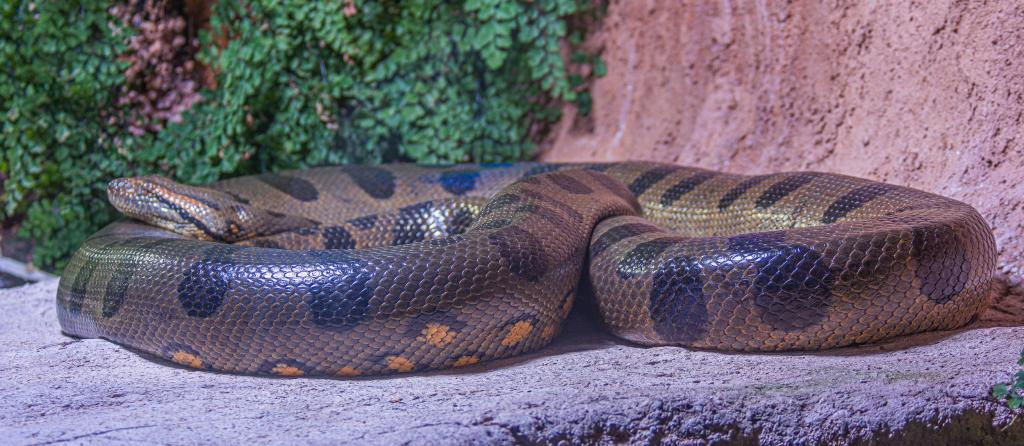





Copyright infringement not intended
Picture Courtesy: https://www.downtoearth.org.in/news/wildlife-biodiversity/scientists-shocked-to-discover-new-species-of-green-anaconda-the-world-s-biggest-snake-94524
Context: Scientists have identified a new species of green anaconda, naming it the "northern green anaconda," which coexists with the previously known "southern green anaconda."
About Green Anaconda
|
Feature |
Southern Green Anaconda (Eunectes murinus) |
Northern Green Anaconda (Eunectes akayima) |
|
Previously known as |
Green Anaconda (single species) |
Green Anaconda (single species) |
|
Habitat |
Peru, Bolivia, French Guiana, Brazil |
Ecuador, Colombia, Venezuela, Trinidad, Guyana, Suriname, French Guiana |
|
Appearance |
Olive-colored with large black spots |
Similar to Southern Green Anaconda |
|
Size |
Up to 7 meters long, 250+ kg |
Likely similar to Southern Green Anaconda |
|
Diet |
Capybaras, caimans, deer, etc. |
Likely similar to Southern Green Anaconda |
|
Hunting method |
Ambush, constrict prey |
Likely similar to Southern Green Anaconda |
|
Ecological role |
Apex predator, maintains ecosystem balance |
Likely similar to Southern Green Anaconda |
|
Genetic difference |
5.5% divergence from Northern Green Anaconda |
5.5% divergence from Southern Green Anaconda |
|
Time of divergence |
Around 10 million years ago |
Around 10 million years ago |
|
Conservation status |
Requires reassessment |
Requires new conservation strategies |
|
Threats |
Habitat loss, climate change, pollution |
Likely similar to Southern Green Anaconda, but specific threats need investigation |
|
PRACTICE QUESTION Q. What is the key reason scientist believe the northern and southern green anacondas are distinct species? A) They have different hunting techniques. B) They have different habitat preferences. C) They have a significant genetic difference D) They have different lifespans. Answer: C |







© 2025 iasgyan. All right reserved